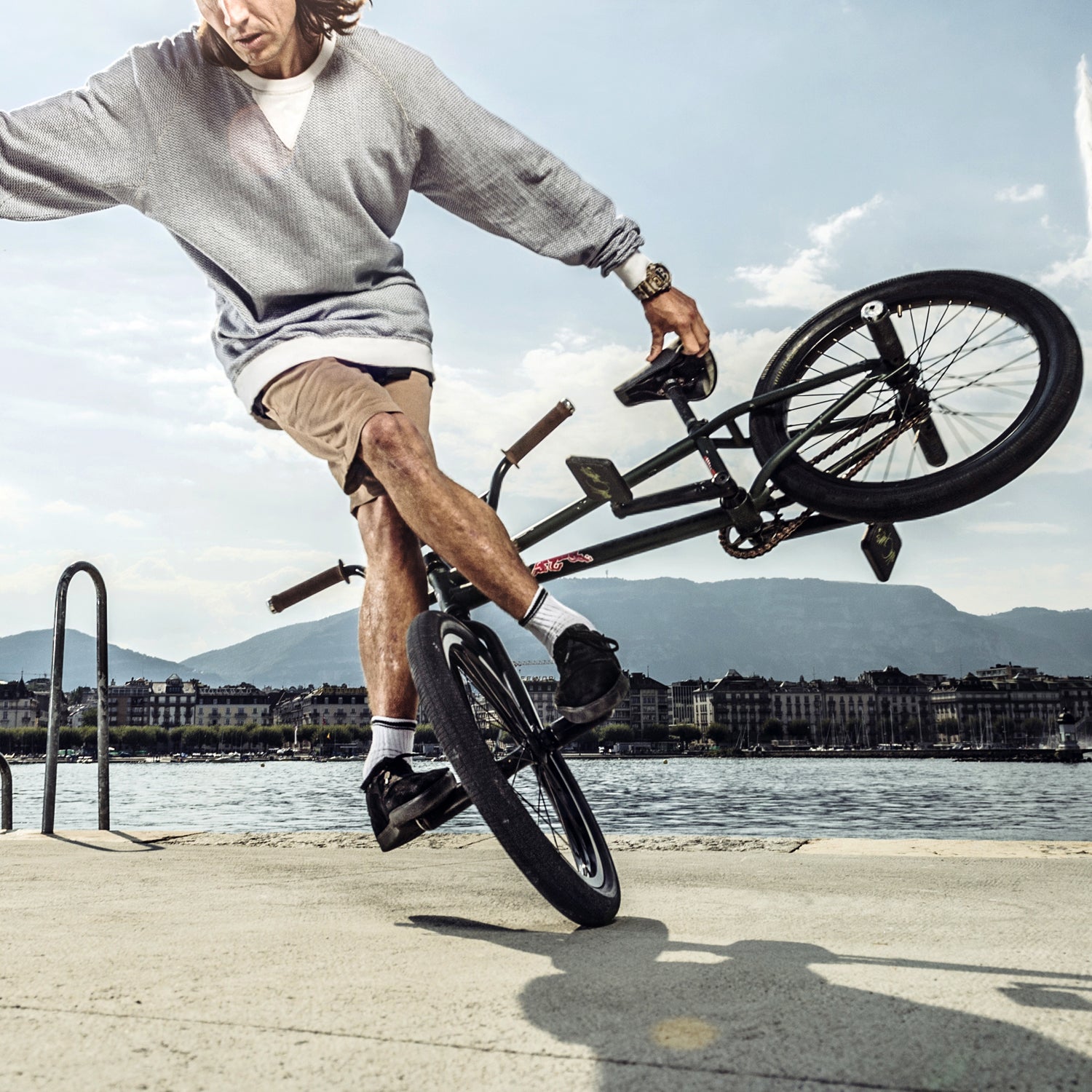The mind of a champion isnŌĆÖt something youŌĆÖd normally expect to be able to detect in a brain scanner. But thatŌĆÖs what researchers at the University of California, San Diego have been pursuing for the last few yearsŌĆöand their latest results, , suggest that itŌĆÖs even possible to train your brain to be more champion-like.
The new study, by UCSD clinical psychiatry professor Lori Haase and her colleagues, put seven members of the U.S. BMX cycling team through a specially designed mindfulness training program tailored to enhance peak performance, adding unusual elements like an ice-bucket challenge to the breathing exercises and meditations techniques of typical stress-reduction mindfulness routines. By the end of the seven-week study, the athletes scored higher on assessments of self-awareness and reported feeling more ŌĆ£presentŌĆØ in competition. And more intriguingly (and concretely), their brains responded differently to the stress of a sudden shortage of oxygen while performing cognitive tasks in an fMRI scanner.
Haase and her mentor, Dr. Martin Paulus, have been studying ŌĆ£elite brainsŌĆØ since 2009, searching for the characteristics that allow some people to thrive under pressure while others wilt. To fine-tune the approach for athletes, Haase and Steven Hickman, director of the UC San Diego Center for Mindfulness, developed a modified program they call ŌĆ£,ŌĆØ or mPEAK. This version of mindfulness training puts more emphasis on sport-specific skills like concentration, and addresses common athlete pitfalls like perfectionism by teaching self-compassion. It also incorporates what Haase calls ŌĆ£experiential exercises,ŌĆØ like breathing through a straw or holding your hand in a bucket of ice water for as long as you can.
ŌĆ£Typically, athletes are pretty in tune with their body awareness,ŌĆØ Lori┬ĀHaase notes. But mindfulness training offers an opportunity to consider whatŌĆÖs going on in your mind when youŌĆÖre pushed to your limits.
ŌĆ£Typically, athletes are pretty in tune with their body awareness,ŌĆØ Haase notes. But the exercises and subsequent discussion offer an opportunity to consider whatŌĆÖs going on in your mind when youŌĆÖre pushed to your limits. The superficial thoughts are obviousŌĆöŌĆ£ItŌĆÖs typically like, ŌĆśI canŌĆÖt breathe, I need more air, if I donŌĆÖt get more air IŌĆÖm going to pass out,ŌĆÖŌĆØ she saysŌĆöbut thereŌĆÖs also an underlying narrative that determines how you react to those sensations.┬Ā
Of course, mindfulness is a bit of a buzzword these days, with bestselling apps and wide-ranging claims about its curative powers for everything from depression to the common cold. But it makes sense that it could be a useful mental strategy for athletes, says University of Ulster sports psychologist Noel Brick, particularly during long endurance competitions when you need to control your emotional response to unavoidable discomfort. ŌĆ£There is nothing more anxiety-provoking than thinking about the 10 miles still ahead when I am already suffering at mile 16 of a marathon,ŌĆØ he says.
Through his research on ŌĆ£ŌĆØŌĆöthe various strategies you use to deliberately direct your focus and thinkingŌĆöBrick has found that elite runners do report trying to be mindful (whether they call it that or not) when races get tough. ŌĆ£I see it as a card in the deck, and a very useful weapon to have,ŌĆØ he says. But there are also times when you may need to abandon that live-in-the-present-moment calmness and acceptance, he notesŌĆölike when your rival starts to pull away from you in the final mile of a race. In that situation, he says, ŌĆ£I need to be strategic, I need to balance my immediate reaction with prospective planning.ŌĆØ
Still, with no control group or before-and-after performance test, itŌĆÖs hard to say for sure whether the mPEAK program helped the BMX riders race faster. Their brain activity during the breathing challenge did shift to a more optimal pattern, and psychological tests showed increased awareness of bodily sensations. The former head coach of the U.S. BMX team, James Herrera, ┬Āin races after the study finished last year: ŌĆ£Their body language is calmer in the gate,ŌĆØ he said. ŌĆ£They move their hands less on the bars, and they get out of the gate a little faster.ŌĆØ
Haase and her colleagues┬Āhave since tested the program again on a high-school lacrosse team┬Āand┬Āoffered sessions to the public. TheyŌĆÖve also submitted a proposal to test the program on potential Mars astronauts for NASA. ItŌĆÖs an alluring thoughtŌĆöthat ŌĆ£the right stuffŌĆØ isnŌĆÖt, after all, something you have to be born with. Maybe you can train it.┬Ā


